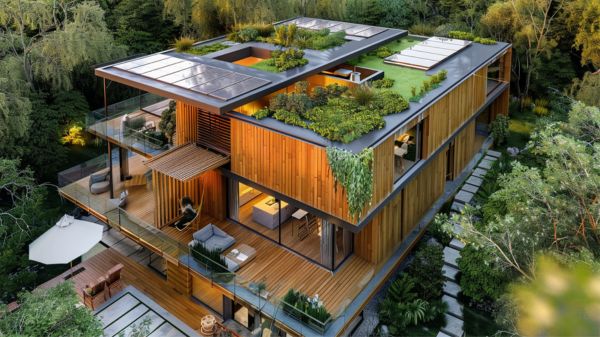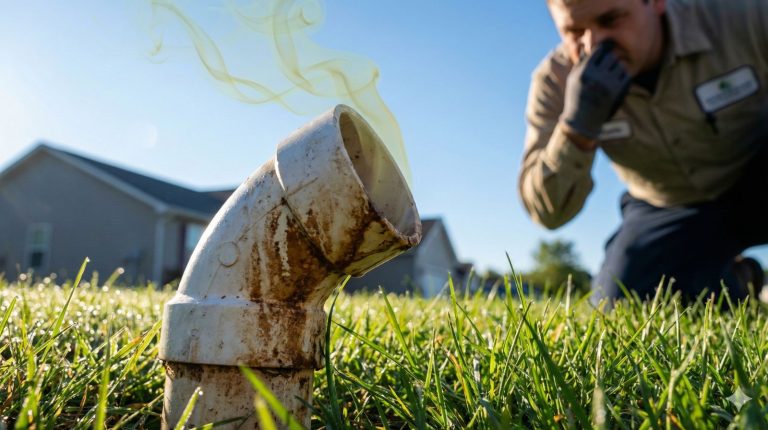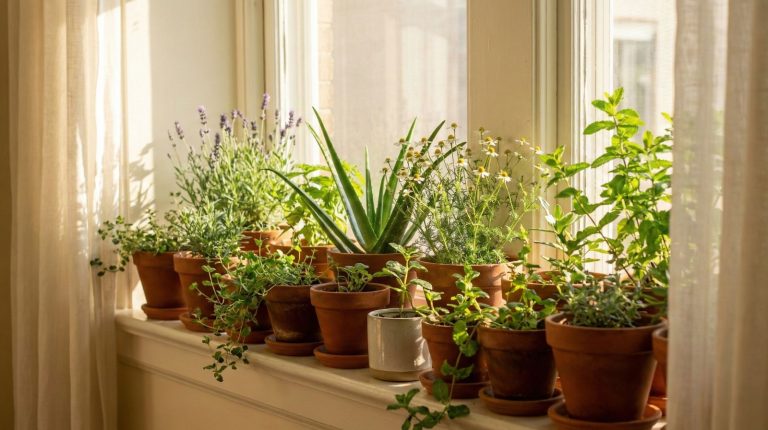Have you ever wondered which building materials truly embody sustainability and environmental consciousness? From the rapid growth of bamboo to the innovative properties of mycelium, the world of sustainable eco-friendly building materials is vast and intriguing.
As you explore the possibilities of cork, hempcrete, and recycled resources, a journey into the world of green building opens up, offering insights into a more eco-conscious future.
Key Takeaways
- Bamboo: Rapidly renewable, versatile, and sustainable with impressive strength.
- Recycled Steel: Highly sustainable, recyclable, and water and pest-resistant.
- Hempcrete: Carbon-negative, excellent thermal properties, and growing popularity in sustainable construction.
- Mycelium: Composed of fungal hyphae, water, mold, and fire-resistant, ideal for construction.
- Recycled Glass: Increasingly used in climate-resistant cement alternatives, reducing environmental impact.
Bamboo
Bamboo stands out as a rapidly renewable and versatile building material due to its impressive growth rate and strength-to-weight ratio. With the ability to grow up to 1.5 inches or 3.8 centimeters per day, bamboo is considered a sustainable and renewable resource for construction projects.
Its flexibility and abundance make it an economical choice for sustainable eco-friendly building materials. Bamboo’s versatility is evident as it grows on every continent except Europe and Antarctica, showcasing its adaptability to various climates and environments.
Furthermore, bamboo’s high strength-to-weight ratio makes it a suitable option for a wide range of construction projects globally. This eco-friendly building material’s fast growth and renewability contribute to its popularity among environmentally conscious builders and designers.
Cork
Cork, derived from the cork oak tree, boasts remarkable qualities like being lightweight, waterproof, fire-retardant, and an excellent insulator. Architects and designers appreciate cork not only for its practical applications but also for its aesthetic appeal.
Its sustainable nature, recyclability, and unique characteristics make it a standout choice for both internal and external cladding in construction projects focused on reducing environmental impact.
Cork Properties Overview
With its lightweight and versatile properties, cork stands out as a sustainable and innovative building material derived from the cork oak tree. Cork is an eco-friendly option for insulation, cladding, and various construction applications.
It’s a renewable resource that offers excellent thermal and acoustic insulation, making it a popular choice for environmentally conscious projects. Due to its fire-retardant nature and waterproof qualities, cork isn’t only practical but also aesthetically pleasing for designers and architects.
Its lightweight nature makes it easy to work with and install, adding to its appeal as a building material. Cork’s history of use spanning centuries underscores its enduring popularity and reliability.
Whether used for internal or external cladding, cork’s unique properties make it a sustainable choice for those seeking eco-friendly construction solutions. Embrace the versatility and eco-friendly advantages of cork in your next building project for a sustainable and innovative outcome.
Cork Applications in Construction
Renowned for its sustainable properties and versatility, cork plays an essential role in modern construction applications. Sourced from the cork oak tree, this eco-friendly material is lightweight, waterproof, fire-retardant, and an excellent insulator.
Cork is a popular choice for internal and external cladding in construction due to its environmentally friendly nature and aesthetic appeal. Designers and architects favor cork for its sustainable characteristics, contributing to a more eco-conscious approach in building projects.
By using cork in construction, individuals support sustainability efforts by opting for a renewable and recyclable building material. Its practical applications, along with its visual and functional benefits, make cork a go-to option for those seeking both style and eco-friendliness in their projects.
Whether it’s for insulation, decoration, or structural purposes, cork proves to be a reliable and sustainable choice in the domain of modern construction.
Cork Sustainability Benefits
Harvested from the cork oak tree without causing harm, cork is an eco-friendly and sustainable material with impressive benefits. Its lightweight nature makes it easy to work with, while also providing excellent insulation properties. Cork is versatile, being used in a variety of applications such as flooring, wine stoppers, and even in construction projects.
One of the key advantages of cork is its fire-retardant properties, adding an extra layer of safety to buildings. Beyond its practical uses, cork is also aesthetically pleasing, making it a sought-after choice for designers and architects looking to incorporate sustainable materials into their projects.
Whether it’s for internal or external cladding, cork offers a visually appealing solution that aligns with eco-conscious principles. Its ability to be both functional and attractive makes cork a standout option for those seeking sustainable building materials.
Hempcrete
Hempcrete, known for its carbon-negative properties and minimal embodied carbon footprint, is a sustainable building material that offers excellent thermal and acoustic properties when combined with lime. This eco-friendly option is gaining popularity in sustainable construction due to its renewable nature and positive environmental impact.
When hemp fibers are mixed with lime, they create a sturdy material that provides insulation while being fire-resistant. Here’s a quick overview of the key features of Hempcrete:
| Key Features | Description |
|---|---|
| Embodied Carbon Footprint | Minimal impact on the environment due to carbon negativity. |
| Thermal Properties | Offers excellent insulation properties, reducing energy consumption. |
| Acoustic Properties | Provides soundproofing capabilities, enhancing indoor comfort. |
Hempcrete serves as a reliable insulator in construction, promoting energy efficiency and environmentally friendly building practices. Its sustainable qualities make it an attractive choice for those aiming to decrease their carbon footprint in construction projects.
Mycelium
You’ll find that mycelium, composed of fungal hyphae, boasts impressive strength and resilience, making it an ideal choice for sustainable construction projects.
Its environmental benefits, including water, mold, and fire resistance, align with green building practices, showcasing its eco-friendly attributes.
Additionally, mycelium’s versatility allows for diverse construction applications, offering a range of design possibilities in the architectural landscape.
Strength of Mycelium
With its unique composition of thin fungal strands known as hyphae, mycelium showcases promising strength as an eco-friendly building material. Here are some key points to assess:
- Environmentally Sustainable: Mycelium is a sustainable option for construction due to its minimal environmental impact.
- Water-Resistant: This material is naturally resistant to water, making it suitable for humid environments.
- Mold-Resistant: Mycelium’s composition inhibits mold growth, ensuring a healthier indoor environment.
- Fire-Resistant: Despite its organic origin, mycelium exhibits fire-resistant properties, adding a safety factor to structures.
Mycelium’s durability, combined with its eco-friendly characteristics, makes it a versatile and innovative choice for modern construction projects. Its strength, resistance to various elements, and adaptability in design highlight its potential as a sustainable building material.
Environmental Benefits
An environmentally sustainable building material, mycelium is comprised of a network of thin fungal strands known as hyphae. Mycelium offers numerous environmental benefits, making it a popular choice for sustainable construction practices.
One key advantage is its minimal embodied carbon footprint, contributing to lower overall carbon emissions in the construction industry. This eco-friendly material is water, mold, and fire-resistant, enhancing its durability and suitability for various building projects.
Mycelium’s versatile design allows it to be molded into different forms, providing architects and builders with flexibility in design and construction. Due to its eco-friendly properties and the growing interest in sustainable building materials, mycelium is gaining traction as a preferred choice for environmentally conscious projects.
Its combination of strength, versatility, and minimal environmental impact makes mycelium a compelling option for those looking to reduce their carbon footprint in construction.
Versatile Construction Applications
Mycelium’s versatility in construction applications allows for innovative and sustainable building solutions. Here are some key points to ponder:
- Mycelium, consisting of thin fungal strands called hyphae, is a sustainable building material.
- This eco-friendly material is water, mold, and fire-resistant, making it suitable for various construction applications.
- Mycelium can be transformed into different forms, offering versatility in design and construction projects.
- With minimal waste production and no negative impact on the environment, mycelium is an ideal choice for sustainable construction practices.
The growing interest in incorporating mycelium into buildings stems from its environmentally sustainable properties. By embracing mycelium as a construction material, you not only contribute to sustainable building practices but also benefit from its versatile design options and minimal environmental footprint. Consider exploring mycelium for your next construction project to align with eco-conscious principles and innovative building solutions.
Precast Concrete
Crafted in controlled factory environments, precast concrete offers a sustainable solution for construction projects with its reduced CO2 emissions and precise measurements.
This material not only helps minimize waste and energy consumption but also provides high strength and durability, making it a reliable choice for various construction applications. Some varieties of precast concrete can even reabsorb a significant portion of their embodied carbon footprint, further enhancing their eco-friendly profile.
To highlight the benefits of precast concrete, let’s take a look at the comparison table below:
| Advantages of Precast Concrete | Description |
|---|---|
| Reduced CO2 Emissions | Lower environmental impact compared to on-site pouring. |
| Exact Measurements | Minimizes waste and energy consumption during production. |
| High Strength and Durability | Offers reliable and long-lasting construction solutions. |
Recycled Glass
Recycled glass is increasingly finding its way into the construction industry, particularly in the manufacturing of climate-resistant cement alternatives. This innovative approach has the potential to replace natural aggregates in sustainable cement production, offering a more environmentally friendly option for building materials.
Incorporating recycled glass in cement not only helps in reducing environmental impact but also contributes to the creation of a more sustainable built environment.
Manufacturing Climate-Resistant Cement
Utilizing recycled glass in the manufacturing of climate-resistant cement offers a sustainable solution to reduce environmental impact and promote eco-friendly construction practices.
This innovative approach not only repurposes challenging-to-recycle glass but also enhances the durability and aesthetic appeal of the resulting cement, making it an excellent choice for sustainable building projects.
By incorporating recycled glass into cement production, the construction industry can greatly decrease its environmental footprint and advance towards greater sustainability. Here are some key points to ponder:
- Recycled glass is a valuable material with significant reuse potential in creating climate-resistant cement.
- This sustainable alternative can effectively replace natural aggregates in the production of eco-friendly cement.
- Using recycled glass in cement production helps reduce waste and supports a more environmentally friendly construction approach.
- Climate-resistant cement made with recycled glass demonstrates excellent durability and aesthetic qualities, making it an ideal choice for sustainable construction projects.
Sustainable Cement Aggregates
To enhance the sustainability and environmental impact of cement production, incorporating recycled glass as aggregates offers a promising solution for eco-friendly construction practices.
By utilizing recycled glass in sustainable cement production, the need for natural resources is reduced, making it a more environmentally friendly option. This practice not only helps decrease the carbon footprint associated with traditional concrete but also promotes the creation of climate-resistant cement alternatives.
Sustainable cement varieties incorporating recycled glass can be tailored for specific construction projects, providing a practical way to integrate environmentally friendly practices in the industry.
The versatility and durability of recycled glass aggregates make them a great choice for enhancing the sustainability of cement production.
Recycled Plastic
Creating building materials from recycled plastic offers numerous benefits for sustainable construction projects. Recycled plastic, derived from an estimated 139 million tons of single-use plastic produced annually, provides durability, lightweight properties, and excellent insulating characteristics for various construction applications.
By using recycled plastic, you not only contribute to reducing plastic waste that would otherwise clog waterways and landfills but also promote a cleaner environment. Additionally, this practice fosters a circular economy and sustainable construction practices, aligning with eco-friendly initiatives.
Repurposing plastic waste into valuable building materials not only enhances the longevity and efficiency of construction projects but also plays a significant role in advancing sustainability efforts. Embracing recycled plastic in construction is a practical step towards a greener future, where materials are utilized efficiently, waste is minimized, and the environmental impact is reduced.
Recycled Steel
Recycled steel stands out as a highly sustainable building material due to its exceptional recyclability and ability to reduce the construction industry’s carbon footprint. Its durability and long-lasting properties make recycled steel an excellent choice for sustainable construction projects. The water and pest-resistant nature of recycled steel guarantees longevity while minimizing maintenance requirements, offering a practical solution for eco-conscious builders.
By utilizing recycled steel, construction projects play an essential role in reducing operational carbon emissions, contributing to a greener environment. The repeated recyclability of steel without compromising quality showcases its eco-friendly and sustainable characteristics, making it a preferred option for environmentally conscious builders.
When considering building materials for your construction projects, opting for recycled steel not only promotes sustainability but also supports efforts to reduce the carbon footprint of the construction industry. Its versatility, durability, and environmental benefits make recycled steel a compelling choice for eco-friendly and sustainable construction practices.
Recycled Wood
Using recycled wood in construction projects offers a sustainable and environmentally friendly alternative to traditional timber materials. Recycled wood is a key player in the sustainable construction industry, providing various benefits:
- Reduce Wood Waste: By repurposing old timber, recycled wood helps save trees and decrease wood waste in landfills.
- Versatile Material: Despite being lightweight, recycled wood remains a strong material suitable for a wide range of construction applications.
- Promotes Biodiversity: Indirectly contributes to promoting biodiversity by reducing the demand for freshly cut timber, benefiting ecosystems.
- Rustic Charm: Apart from being an eco-friendly choice, recycled wood adds a rustic charm to projects, enhancing their character and sustainability.
Incorporating recycled wood into construction not only decreases environmental impact but also adds a unique touch to the design.
Embracing this sustainable material aligns with eco-friendly initiatives and supports the movement towards a more responsible construction industry.
Terrazzo
Terrazzo, a unique composite material traditionally utilized for flooring and countertops, offers a sustainable and durable building option for various construction projects. This material is crafted by mixing marble, quartz, granite, glass, or other suitable chips with a binder material.
With a history dating back over 500 years and originating in Italy, Terrazzo has gained popularity for its durability, leading to reduced waste and cost savings in the long run. The blend of materials in Terrazzo not only contributes to its strength but also makes it an eco-friendly choice for environmentally conscious projects.
Its sustainable composition and long-lasting properties align with the growing demand for green building materials. Whether used in commercial or residential settings, Terrazzo stands out as a versatile and environmentally friendly option for flooring and countertops.
Consider Terrazzo when looking for a stylish, durable, and eco-conscious building material for your next construction endeavor.
Conclusion
To sum up, when contemplating sustainable eco-friendly building materials, bamboo, cork, hempcrete, mycelium, precast concrete, recycled plastic, steel, wood, and terrazzo top the list. These sustainable selections showcase strength, insulation, carbon negativity, durability, and unique aesthetics.
By embracing these environmentally conscious options, you can create a green and gorgeous built environment that prioritizes preservation and efficiency.




